| Glass has been used as a material for art for
thousands of years, but technology is still advancing, and artists can do
fantastic things with it. This beautiful group of two abstract pieces in
pink immediately caught our eye as we entered the gallery. It is called the
'Macchia Seaform Group' and was designed by Dale Chihuly from Seattle. He is
an internationally acclaimed artist working in glass often with a team of
glassworkers. | 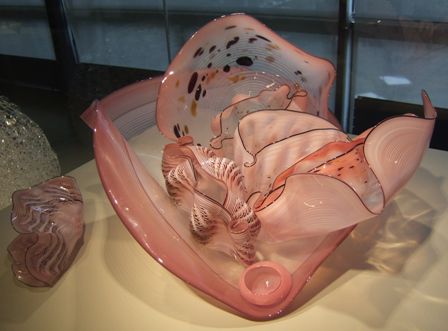 |
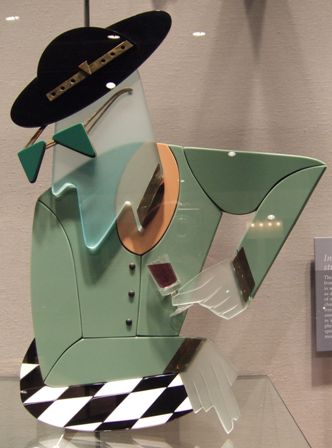 |
This
Art Deco piece is a lamp and is very stylish. |
| Still lives of fruit have always been popular as
subjects, but we were amazed how lifelike this bowl of fruit appeared,
especially when we went back home and saw a pear with just this colouring
sitting up in our own fruit bowl. | 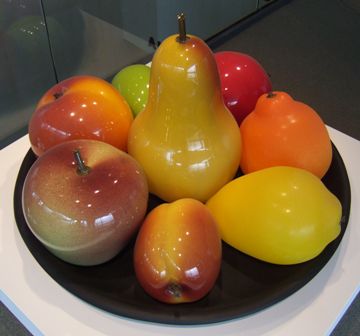 |
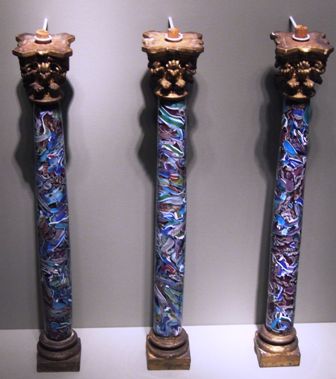 |
These are glass legs believed to be from a French chair from the time of
Louis XV. |
| Not a chair meant for sitting on, although it is life
size. I think the seat is glass, and the back does not look at all comfortable
either. A ceremonial piece. | 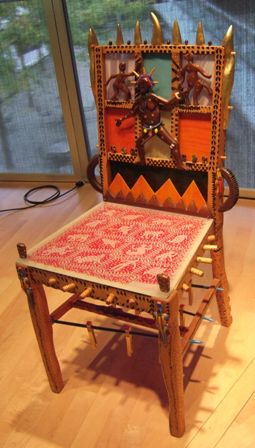 |
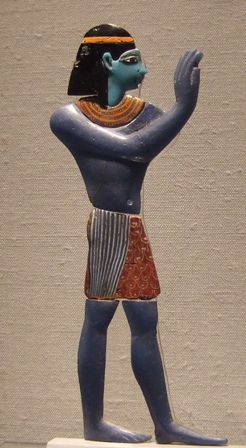 |
A Ptolemaic
Egyptian figure made of glass inlays dating from the 3rd -1st century BC.
The technique was used at least as early as the reign of Tutenkhamen in the
14th century BC. This later style was actually glued together rather than
housed in separate recesses as in the earlier style. |
| A wedding basket covered in designs made up from thousands of
tiny glass beads and hassa shells. This is one of a set of three. The style
is now out of fashion but they were popular as containers for wedding gifts
in earlier times. They have indented bottoms since they would have been
carried to the celebration on the head. | 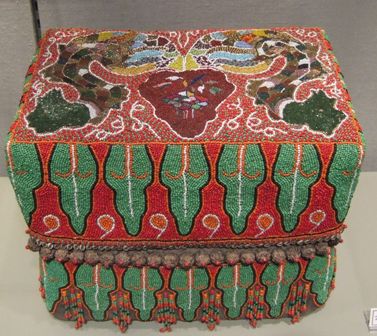 |
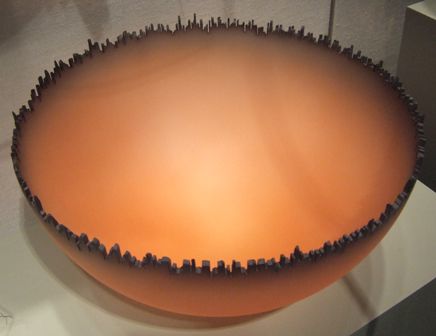 |
All the pieces were really well lit to display the beautiful colours and
textures, but this modern piece really glowed in its setting. It is called
'Cityscape' and was made from industrial Pyrex by Jay Musler in 1981. The
colour comes partly from air-brushing after having cut the jagged edge and
sandblasted the bowl. |
| A large plaque in white on black bas relief. This is
an example of cameo glass made in the 1890s by George Woodall who was one of
over 70 craftsmen employed by Thomas Webb in Staffordshire. The style was
extremely fashionable at the time. This is his largest and most ambitious
plaque and is entitled 'Moorish Bathers'. | 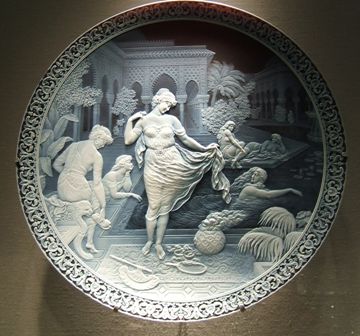 |
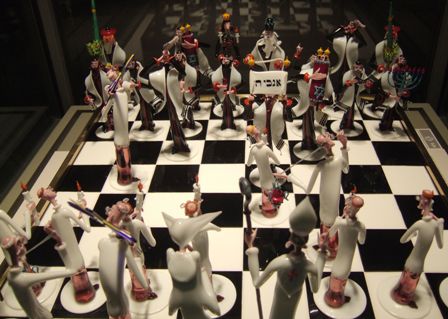 |
Everyone seemed really taken with the glass chess set with fun figures
representing Jewish and Roman Catholic religious figures each with the
appropriate costume, hairstyle and accessories for its rank. It was made in
1981 by Gianni Toso. |
| Above, just a few of the many glass paperweights from
around the world on
display. Right, a large slab made of sixteen solid
blocks of cut and engraved glass. It is called 'Innerland' and expresses
designer Eric Hilton's concept of the unity of life and inner being. It is
an exceptional sculpture and one of Steuben's greatest achievements. It took
four years to complete. | 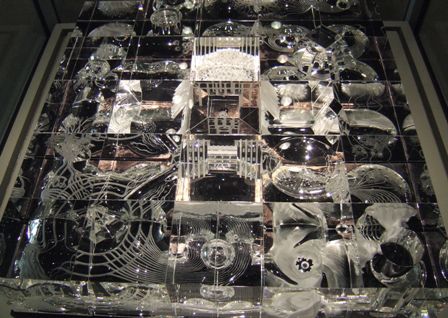 |
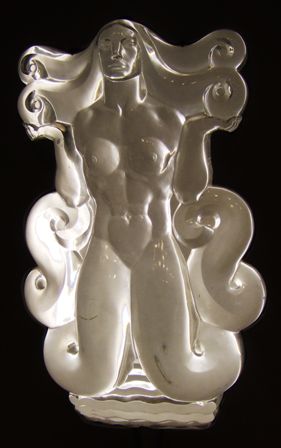 |
This figure also drew everyone's eye. A simple concept in white opalescent
glass, the lighting showed it off to perfection. It portrays a mermaid
riding the Atlantic waves and commemorates the start of glassmaking in the
Americas by European immigrants. 'Atlantica' was created by Steuben designer
Sidney Waugh for the 1939 World Fair in New York. It weighs over 300lbs and
took a team of five glassworkers to pour the glass into the mould after
which three men took several months to polish it. |
| This is another piece of Steuben glass, probably made at
Corning as the Steuben factory is on the ground floor of the museum complex.
It was not in the gallery but for sale in the museum shop. We don't tend to
have a lot of Christmas ornaments, but Jan really liked this - there is just
something about the quality of a solid piece of flawless glass. | 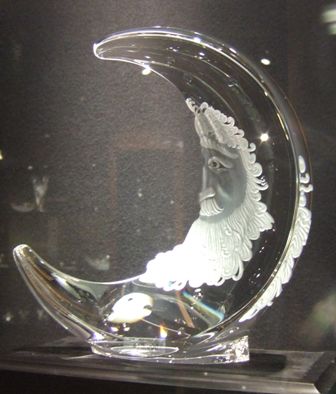 |
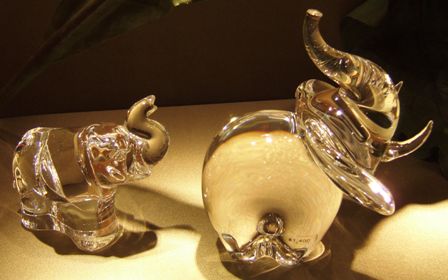 |
The elephants were among several other animals also for sale in another
Steuben display case. |
|